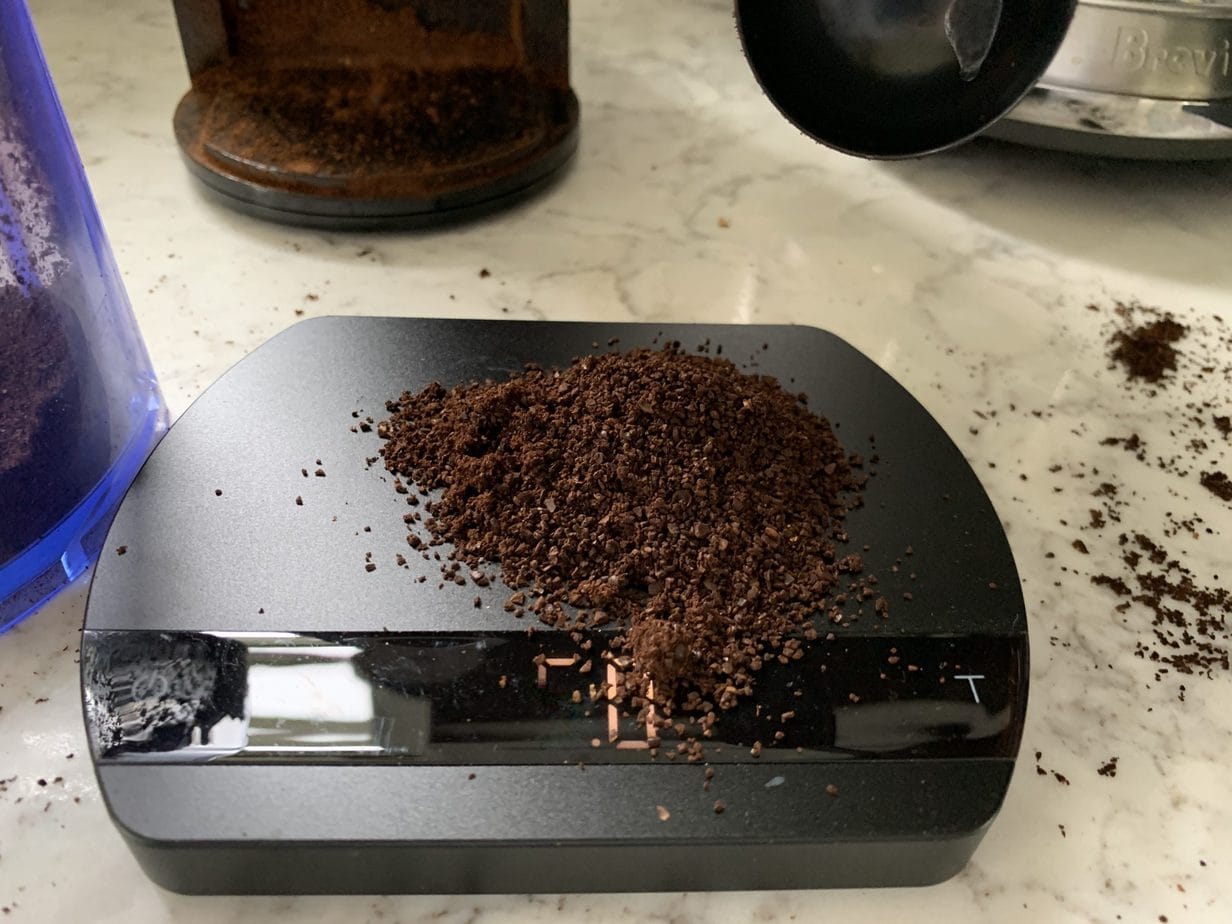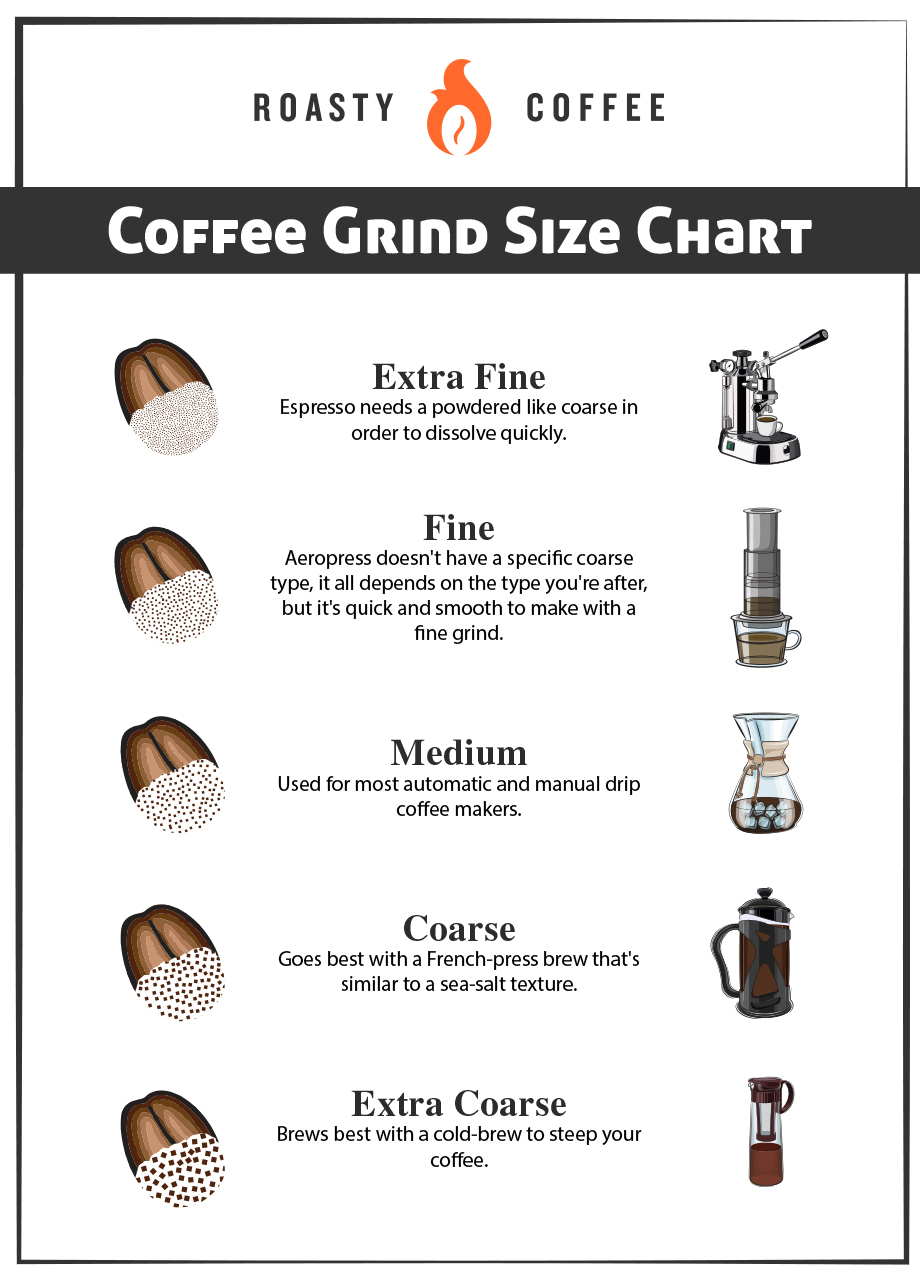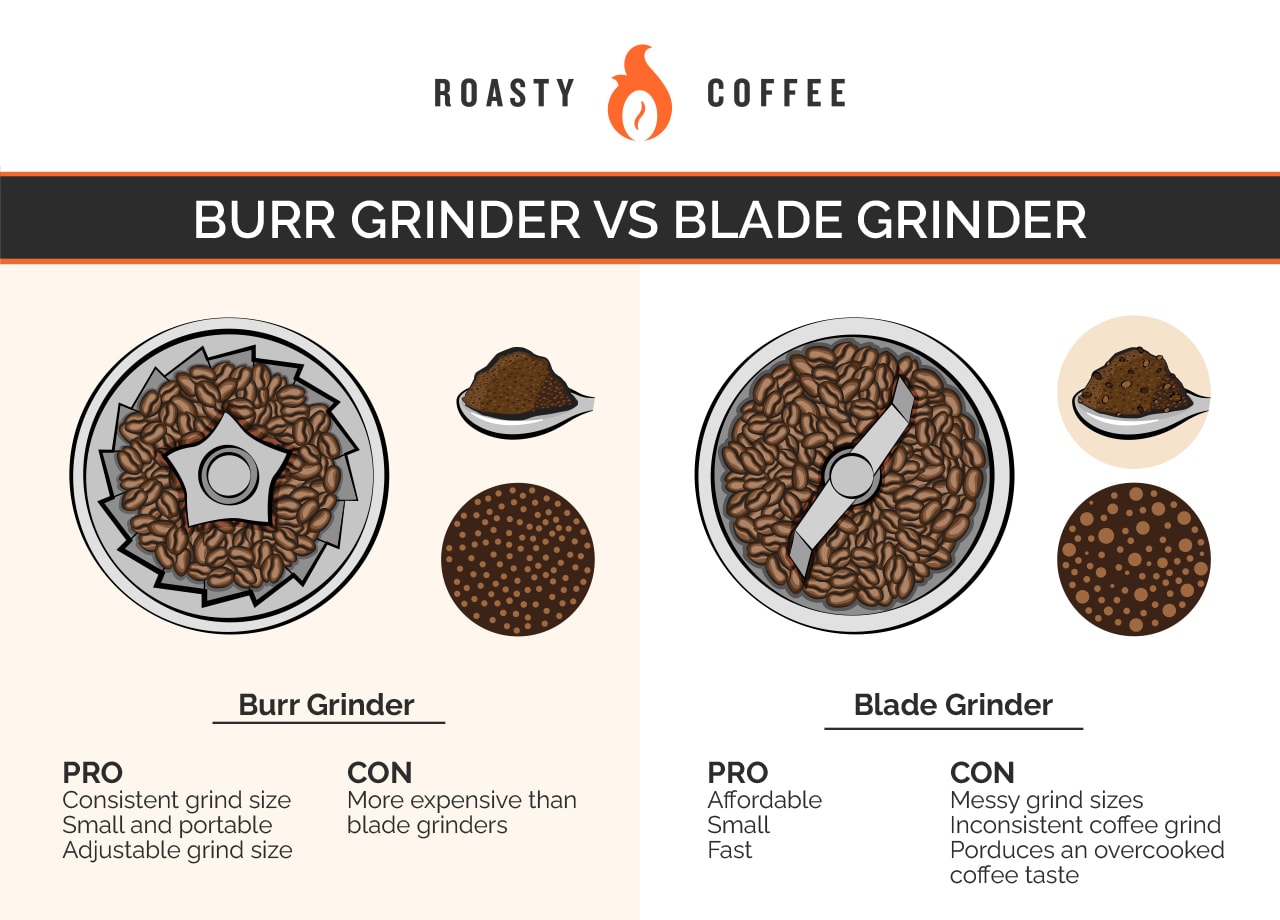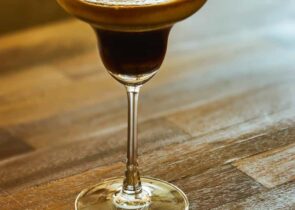Most people fail at brewing a perfect cup of coffee before they even begin by using pre-ground coffee beans. Seventy-nine percent of Americans brew their coffee at home. But how many have it freshly ground as well?
A lot of factors influence the resulting cup. But even if you buy the best beans, follow the correct brewing technique, use an ideal coffee to water ratio and optimal water temperature but fail to grind your coffee before brewing, you’re missing out.
Underestimating this part of the process is one of the most common mistakes even the most advanced coffee lovers make. But we’re here to help you prevent it and help you understand why a good coffee grinder is the equipment key to success.
What are the main grind sizes? Which ones are suitable for your preferred method of brewing? And what is the best grinder to choose to perform the task?
We’ll answer all these questions and help you take your morning cup to the next level.
Why Not Buy Pre-Ground Coffee?
By grinding your coffee just before brewing, you’re ensuring its freshness. Remember, a coffee bean is an organic product whose flavors are affected by outside factors. Since it’s the product of a plant and not some synthetically produced commodity, it can’t maintain consistent flavor and qualities for an extended period of time.
When the beans are roasted, CO2 is released, which helps to release the oils and create the characteristic aroma and enhance the flavor. Floral and fruity notes come primarily from this process.
Further, when oxygen enters the coffee grounds, the cells within break down and make it taste lively. Without it, the coffee is muddy, dull, and soapy.
Therefore, if you’re not grinding the beans just before you’re about to make your cup, you are risking losing these key qualities.
Think of coffee flavors like those in ripe fruit. It should explode with pleasant textures, crisp acidity, refreshing sweetness, and spicy aromas when tasting it.
Additionally, getting pre-ground coffee beans limits your brewing to one specific method. While doing it fresh and adjusting the coffee grind allows you to experiment with various ones.

How Does Grind Affect Coffee Extraction?
Your coffee grind size is the main component determining the extraction. It is defined as the process of dissolving flavors from coffee grounds in water. A great-tasting cup requires using the correct coffee-to-water ratio, correct temperature, and correct brew time, but precise grind can’t be forgotten, either.
Using the wrong grind size can produce one of two results: under-extraction or over-extraction.
Under-extraction happens when the grinds are too coarse. A cup of under-extracted coffee may taste sour, acidic, and salty, and if that’s the case, you’ll know to use a finer grind next time you brew to balance the intense flavors better.
The opposite problem, over-extraction, occurs when the grounds are too fine. Over-extracted coffee tastes dull and bitter with muted flavors and no distinct features.
What you’re ultimately aiming for is a balanced extraction when all of the tasting notes are allowed to come out, producing a coffee flavor that’s sweet, well-rounded, and crisply acidic. That’s your sweet spot!
So let’s get into what the main types of grinds are, how to distinguish them, and which ones are recommended for different brewing methods.
Coarse, Medium-Coarse, or Extra Coarse
Coarse grounds look like kosher sea salt and are the perfect grind size for use in a French press or percolator. Extra-coarse grounds are a bit larger, and these coffee particles are mainly used for making cold brew coffee beverages. The middle ground, medium-coarse coffee, looks like rough sand and is ideal for use with a Chemex, Clever dripper, or a flat-bottom filter like the Kalita.
Medium
Medium grind size is mainly used for drip coffee brewing methods, and your favorite coffee shops probably use the table salt-sized grounds to brew the cups of coffee you stop in for every day.
Fine, Medium-Fine, or Extra Fine
A fine grind looks like powdered sugar and is used for espresso brewing, a Moka pot (which can also work well with other sized grounds), or an Aeropress.
A medium-fine grind size is great for use in cone-shaped filters, like the Hario v60, while an extra-fine grind resembles flour and is mostly reserved for making Turkish coffee.

Brewing Methods and Their Grind Sizes
At A Glance
We’ve created this simple chart to break down the best grind size for each brew method as well as offer a comparison so you know what you’re looking for:
| Brew Method | Grind Size | Compare Grind To... | Steep Time | Notes |
|---|---|---|---|---|
| Aeropress | Any, depending on desired outcome. A fine grind, however, results in a quick, smooth brew. | A fine grind should look and feel like sugar. | 30 seconds to 1 minute | Aeropress is durable, portable, and efficient for single-serve espresso. |
| Chemex | Medium-Coarse | Consistency should be like sea salt. | 3.5 to 4.5 minutes. | Chemex is popular due to its flavorful, aromatic, and grit-free brew. |
| Cold Brew (Drip) | Extra Coarse | Consistency should be similar to peppercorns. | 4 to 6 hours | This method requires a bit more setup, but it extracts flavor from the grinds at a quicker rate for cold brew. |
| Cold Brew (Mason Jar) | Extra Coarse | Consistency should be similar to peppercorns. | Overnight or around 12 hours | While it requires planning ahead, letting grinds soak overnight is an easy, effective cold brew method. |
| Cowboy Coffee | Coarse | Consistency is slightly finer than extra coarse and should seem like Kosher salt. | 4 minutes while boiling | Cowboy coffee is as gritty and rugged as the name suggests, but it's extremely easy to make at a low cost. |
| Drip Coffee Maker | Medium | A medium grind should look and feel like beach sand. | About 5 minutes | For the past century or so, drip coffee makers have been a home staple. They're efficient, easy to use, and can brew large amounts at a time. |
| Espresso Machine | Fine | A fine grind should have a consistency like sugar. | 20 to 30 seconds. | Espresso is an incredibly versatile brew method that's used in a variety of coffee drinks, but it's equally delicious on its own. |
| French Press | Coarse | Consistency is slightly finer than extra coarse and should seem like Kosher salt. | 4 minutes | French press coffee doesn't filter out any flavor from the beans, so the brew is strong, flavorful, and robust. |
| Moka Pot | Fine | A fine grind should have a consistency like sugar. | 3 to 4 minutes | While they don't actually make espresso, moka pots produce a more intense brew similar to espresso, allowing at-home baristas to make espresso beverages at a fraction of the cost. |
| Percolator | Coarse | Consistency is slightly finer than extra coarse and should seem like Kosher salt. | 7 to 10 minutes | Percolator coffee has been around since 1753, so it's got a classic charm to it, and it's a low-cost method. |
| Pour-Over | Medium-Fine | Medium-fine grinds are somewhere between drip grinds and espresso, slightly more powdery than sand. | 3 to 4 minutes | Pour-over coffee, like a Chemex, is delicious, grit-less, and aromatic, but you have a wide array of options and can make full carafes or single-serve amounts. |
| Turkish Coffee | Extra Fine | The finest grind you can get — it should feel like powdered sugar. | 7 to 10 minutes | Sort of an elevated cowboy coffee, the resulting brew is thick, bold, and rich. |
| Vacuum/Siphon | Medium | A medium grind should look and feel like beach sand. | 1 minute to 1 minute 30 seconds | Vacuum siphoned coffee is like Weird Science in your kitchen. It's super cool looking, and because it exists, well, in a vacuum, all of the aroma and flavor of your coffee is retained. |
| Vietnamese Coffee | Coarse | Consistency is slightly finer than extra coarse and should seem like Kosher salt. | 4 to 6 minutes | Vietnamese coffee isn't versatile, but it's simple and produces a rich, heavy flavor. |
Cold Brew
If you’re a fan of chilled coffee drinks, you probably know that, when using the cold brew coffee making process to make your morning cup, the coffee doesn’t come in contact with hot water; it’s steeped at room temperature to allow all of the coffee’s beautiful and complex flavors to come out…as long as you’re using the right grind.
If your ground beans are the wrong size, you end up with a cup full of lousy coffee. And there’s nothing worse than ending up with under or over-extracted brew after you’ve poured 12 to 24 hours into this popular brewing method.
We recommend using an extra-coarse grind for this method. Keep in mind that the grind depends on the steeping time, and if you steep your cold brew for longer, this allows you to use a coarser grind. We encourage you to experiment until you find the right one.
French Press
If you’re a regular French press aficionado, we recommend using coarse coffee grinds. If your coffee grounds are too fine, your resulting brew will be bitter, muddy, and over-extracted.
A good rule of thumb for French press fans is to pay attention to how hard it is to push the plunger down. If doing so is difficult and there’s a lot of pressure, your grounds are too fine. If pressing the joe feels too easy, on the other hand, your batch of coffee beans is too coarse.
Pour-Over
Chemex
Thanks to its thick filter, a Chemex requires medium-coarse grounds for proper brewing because the filter keeps the coffee from draining too quickly, and the medium-coarse coffee beans prevent over-extraction.
Hario v60
The paper filters used with the Hario v60 are thinner, and the dripping cone is quite large, which means you’ll need medium grounds to make a good cup. If you find your brew is a sour, under-extracted mess, adjust your grind settings, pull out the beans, and try again, this time using finer grounds.
Aeropress
The Aeropress is a pretty unique coffee brewing process because it requires no ideal grind size to make it work. Instead, you’ll need to adjust the settings on your conical burr grinder based on how long you’ll be brewing.
If you use a medium-coarse grind, you can let the coffee brew for three to four minutes. However, with a finer grind size, one minute is enough time. A common grind size for Aeropress lovers is medium, so if you plan to experiment with grind sizes and extraction times, that’s a good place to start.
Espresso
The only suitable espresso grind size is extra fine, using coffee that’s the texture of powdered sugar. Thanks to the high temperatures and massive amounts of pressure used to brew the dark, super-concentrated coffee, an incorrect grind size will ruin the result. Extra fine coffee allows the hot water to make the most of your java’s aroma in just a few seconds.
If you use coarse ground coffee in your espresso machine, the coffee will brew too quickly, and you’ll end up with a watery, under-extracted shot that tastes sour and unbalanced. If the grind is too fine, though, your drink will be too bitter and have a burnt aftertaste.
Coffee Grinders 101

As we already established, freshly ground coffee is the way to go; pre-ground beans can produce a decent cup, but when compared to a brew made with fresh beans, the pre-ground joe is undoubtedly the inferior choice.
But before you head to the store and buy any old grinder, you should know grind settings aren’t the only things you’ll need to consider when purchasing one of these handy tools. There are a couple of different types of coffee grinders to choose from, and beware: not all of them are created equal.
Which coffee grinder is more suitable for you and offers the best value for money? Let’s find out.
Blade Grinder
Many people are tempted by blade coffee grinders since they are very affordable, small, and seem to be an easy solution to all your coffee grinding problems. However, despite their size and price, these grinders aren’t the best. In fact, one of the most common mistakes people make when they’re preparing and brewing their coffee at home is using a blade grinder!
Blade grinders work by using metallic blades and high speed to chop the coffee beans. This process is fast and messy, and leaves you with an inconsistent grind. This means some of the coffee will be too fine while the rest of it is too coarse. As you can imagine, that doesn’t bode well for brewing; you’ll be choking down a disastrous combination of over and under-extracted coffee as you sip your morning cup.
Plus, blade grinders create unwanted heat and friction as they work, making the coffee taste overcooked and burnt, even if your beans were fresh to begin with. Because of the possibility of burnt tasting beans and inconsistently sized grounds, we think you’re better off buying pre-ground coffee beans instead of a blade grinder.
Burr Grinder
Burr grinders work differently than their bladed counterparts. Instead of messily chopping away with a sharp blade, they apply uniform pressure to all the coffee beans at low speed, crushing them and creating a consistent grind size across your beans.
Most burr grinders are more expensive than blade grinders, but they are still relatively inexpensive. They’re convenient, too, with some being so small and portable, you could easily bring one with you on your next camping trip.
These grinders are equipped with adjustable settings, so you can easily achieve any size from the coffee grind chart above. Whether you need a finer grind size for your beloved espresso or extra-coarse beans for your cold brew, burr grinders have got you covered.
While it might be easy to fall into the trap of buying a cheap blade grinder (or you might have gotten one as a gift from your not-so-coffee-savvy friends), getting a burr coffee grinder makes such a big difference in the resulting cup that it’s worth the upgrade.
Manual Or Electric?
While some coffee traditionalists swear by using a manual grinder to get the perfect grounds by hand, there are also plenty of electric grinders on the market that can do the same job in a fraction of the time. How do you know which is right for you?
The choice between manual and electric depends on why you’re using the grinder. For brewers like the Aeropress or pour-over, manual grinders are ideal, even though they take a little more time. If you choose to go the manual route, you’ll need to make sure it’s a burr grinder so your coffee particles are consistent and unaffected by unwanted heat or friction.
However, if you’re making large quantities of coffee, an automatic grinder might be worth the investment, especially if you’re mainly brewing espresso. An automatic grinder makes it easier to get a consistently fine and powdery grind, which you need if you hope to enjoy good espresso.
Dialing In Your Grinder
If you know what “dialing in your grinder for espresso” means, you’re probably serious about your joe. After all, this is what differentiates a good cup of coffee from an excellent one.
Since espresso extraction happens very quickly (in around 30 seconds), each brewing step needs to be done perfectly. Small adjustments in water temperature, the precise weight of coffee going in, the time, and the yield all make a massive difference, but of course, the coffee grind is a key part of the process, too.
The process of dialing in your grinder for espresso refers to balancing the dose, the yield, the grind, and the extraction time to achieve a perfect cup of coffee.
Unsuccessful balance of these aspects results in an espresso that is over or under-extracted and also affects other aspects such as crema or aroma.
Getting it right requires a lot of practice and needs regular adjustments. While automatic grinders are consistent, the settings still need to be adjusted according to the temperature of the coffee machine or the kind of coffee beans used. When brewing, taste, experiment, and adjust the grind regularly to ensure that your coffee tastes perfect.
Coffee Grind Size FAQs
Can I grind my coffee in a blender?
If you want to grind coffee without a grinder and use a blender instead, we’ll save you a bit of time and tell you not even to bother.
A blender works by using metallic blades at high speed. While this makes a pretty delicious smoothie, it just makes a mess of grinding your coffee. The grind size is inconsistent and the appliance creates unwanted heat and friction that will largely affect the taste of your brew. It’s similar to a blade grinder, but worse. You’re better off buying pre-ground coffee.
How do I know I’m using the right grind size?
It is always a good idea to use our coffee grind chart as a starting point before you break down your beans. Then, you’ll need to decide which of the many coffee brewing methods you’ll be using, as each one requires different-sized coffee particles.
The best way to determine whether or not you’ve used the correct grind size is to taste the resulting brew. With a little practice and experimentation, you’ll master the grind in no time.
What can happen to your coffee if you use the wrong grind size?
The worst-case scenario: your coffee is so awful, it’s undrinkable. And unfortunately, in this instance, the worst case is the most likely.
Remember: if your grinds are too coarse for your brew method of choice, you’ll end up with a cup of under-extracted coffee that tastes sour. If your grinds are too fine, your joe will be over-extracted, and you won’t be able to taste any of your beloved coffee’s distinct flavors.
Should I grind coffee beans daily?
While it is generally believed that ground coffee can maintain its freshness for around a week, the coffee experts think otherwise.
As soon as coffee comes in contact with air, it starts oxidizing, which affects the taste. Since some of the coffee grounds (the ones at the top of the bag or a container) are in contact with air much more frequently than those below, this creates inconsistency and an unbalanced cup.
Therefore, some coffee enthusiasts claim that freshly ground coffee maintains optimal qualities for brewing for as short as 30 minutes before it starts deteriorating. So you’ll want to use it in your preferred brewing method, like drip coffee maker or French press coffee plunger, immediately after grinding. This, of course, means you’ll need to grind more beans every day.
Does a finer grind make stronger coffee?
No.
Finer coffee grounds extract more quickly, which is going to make the java taste stronger. However, it often leads to over-extraction and bad coffee that’s gritty and bitter. The grind dictates the steeping time, and if you let the finer grind brew for too long, it will result in an imbalanced cup.
The term “strong” in coffee is relative and depends on many other factors like the type of roast, region, and acidity. If you’re trying to make your coffee as strong as possible, we recommend staying in an approximate range of the grind size chart and adjusting it as the brewing method allows.
Is coffee better if you grind your own beans?
The answer to this question is simple: we think so!
We recommend grinding the beans yourself for a couple of reasons, the first being control. If you’re in charge of the grinder, you have the freedom to decide precisely how coarse or fine your coffee particles will be. And, as we mentioned above, grind size plays a crucial role in the brewing process, so the more hands-on you can be here, the better your chances of ending up with quality coffee.
We also prefer home-ground beans over pre-ground joe because it grinding at home allows less carbon dioxide to escape from your coffee. Carbon dioxide transfers your beans’ flavor-filled oils into your cup, and though the gas begins to leave the beans as soon as they’ve finished roasting, the carbon dioxide escapes more quickly once they’re ground.
Since the ground coffee you buy from the store has been broken down for who knows how long, much of the carbon dioxide — and thus, the flavor — is lost from your coffee. When you grind your beans at home right before brewing, however, you slow down the carbon dioxide’s escape route and produce a more flavorful cup.
The Take-Home Message
Relying on pre-ground coffee is one of the most common mistakes people make when brewing at home. If you want to make the most of your beans’ beautiful tasting notes, grind them yourself right before it’s time to brew. Your cup will be bursting with the fullest flavors while maintaining its crisp acidity and balanced mouthfeel.
But remember: before you get to grinding, you’ll need to be mindful of the brewing method you’ll be using.
Are you ready to take your coffee to the next level and make it taste superior by grinding it yourself? We hope so!
Happy Caffeinating!







